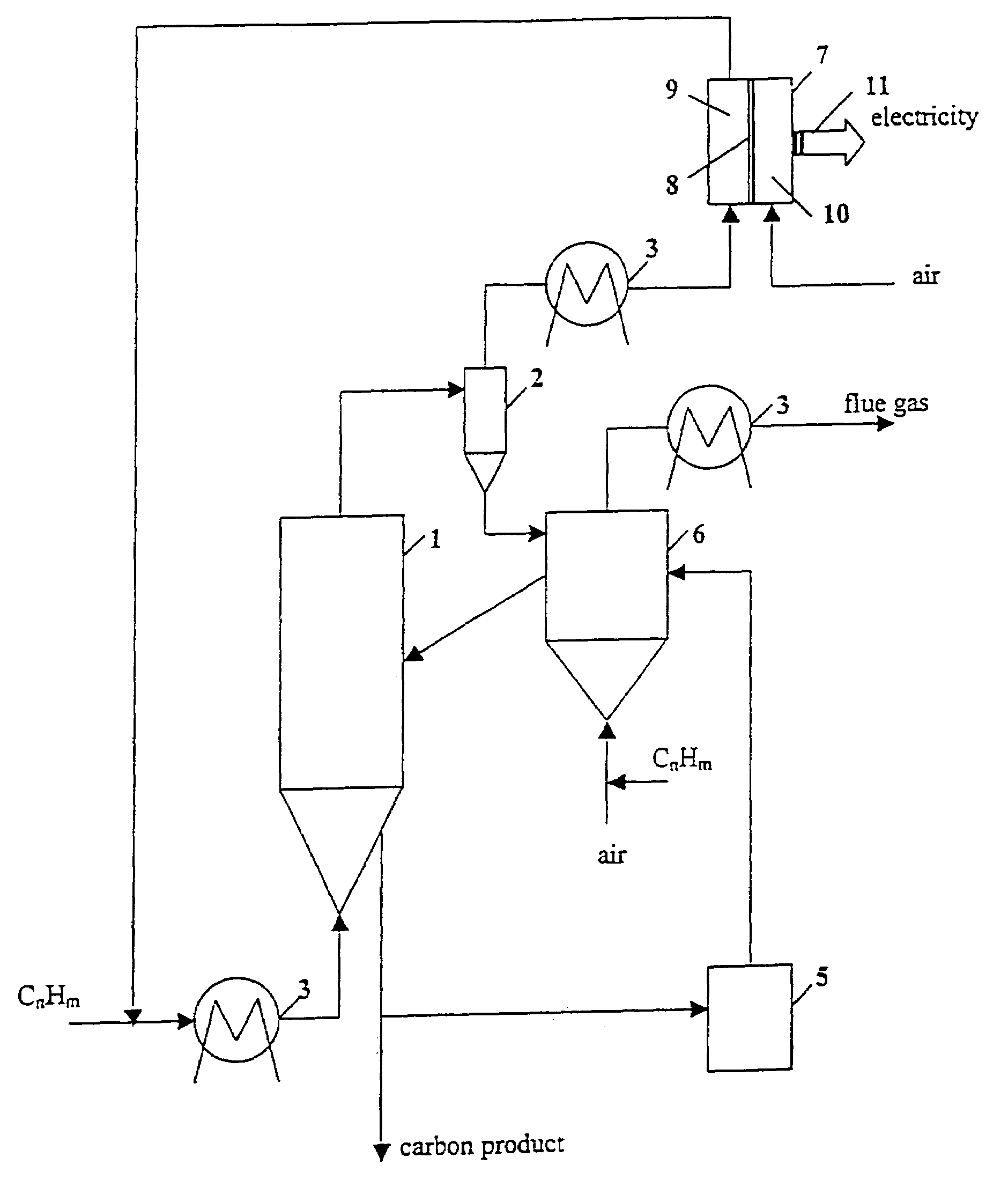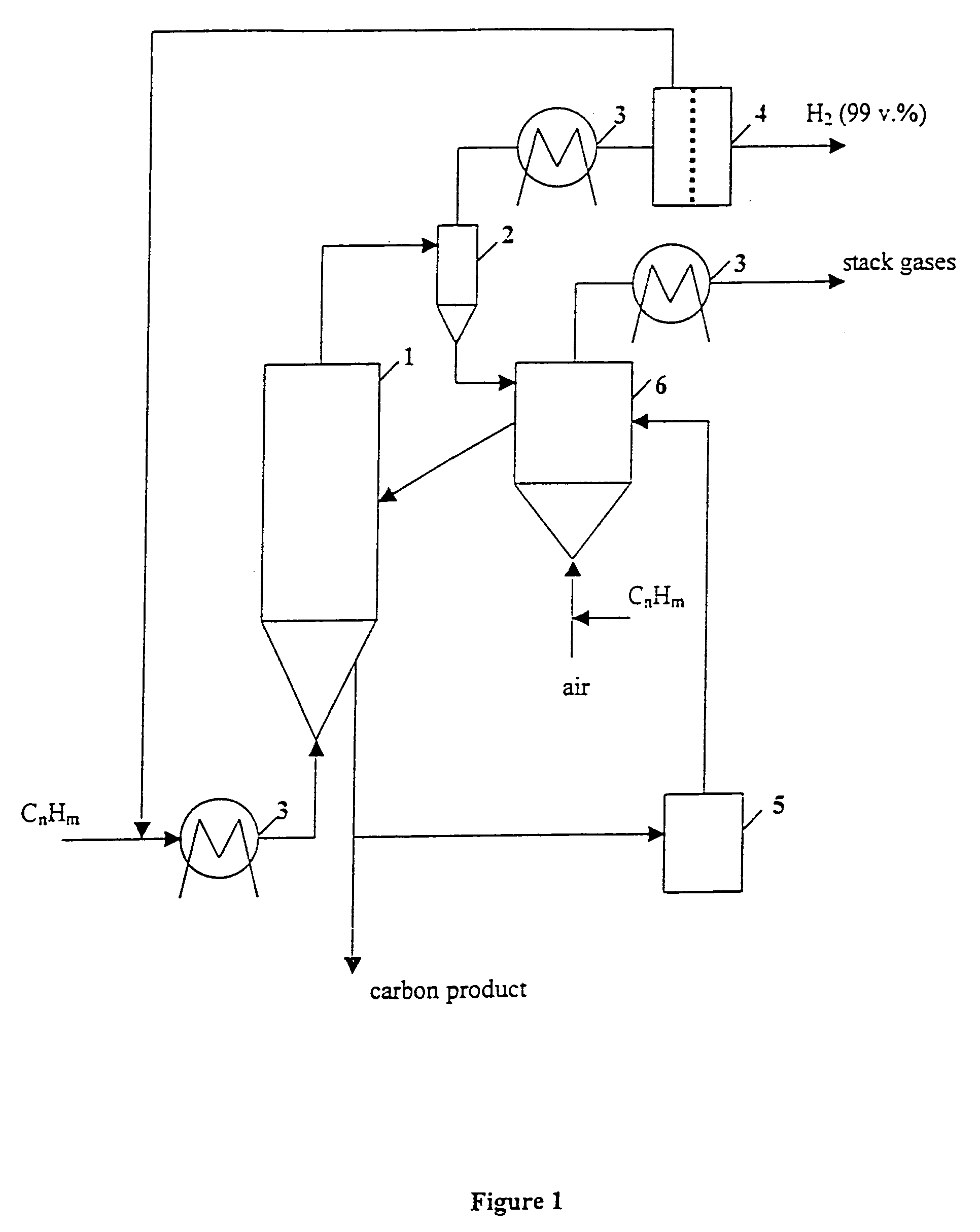Thermocatalytic process for CO2-free production of hydrogen and carbon from hydrocarbons
a hydrogen and carbon-free technology, applied in the direction of physical/chemical process catalysts, hydrogen separation using liquid contact, electrochemical generators, etc., can solve the problems of catalyst deactivation problem, hydrogen contamination with carbon oxides, and high energy consumption of the process, and achieve the effects of low cost, high efficiency, and low cos
- Summary
- Abstract
- Description
- Claims
- Application Information
AI Technical Summary
Benefits of technology
Problems solved by technology
Method used
Image
Examples
example 1
[0043]A sample of activated carbon DARCO® KB-B produced from hardwood (NORIT Americas Inc.) with surface area of 1,500 m2 / g, total pore volume of 1.8 ml / g and particle size of 150 μm was used in this example. 030 g of dry activated carbon (AC) was placed in a 5.0 ml quartz microreactor (a thin bed of carbon material ensured low pressure drop). The reactor was maintained at a constant temperature of 850° C. and atmospheric pressure. The reactor was purged with an inert gas (Ar) at 850° C. for 30 min. (to remove moisture and entrapped air from the catalysts) before introduction of methane. Methane (99.99 v. %) entered the catalytic reactor at a constant flow rate of 5.0 ml / min. The flow rate of the effluent gas after the reactor was measured with the accuracy of 5%. Carbon samples were weighed before and after experiment with the accuracy of 5%. Analysis of methane decomposition products was performed gas chromatographically. Methane decomposition rates (MDR) were determined from meth...
example 2
[0044]The experimental conditions for the examples 2 are similar to those of the Example 1, except, carbon black (CB) Black Pearls2000 (CABOT Corp.) with the surface area of 1500 m2 / g and particle size of 0.012 μm was used as a catalyst. The initial MDR and MDR after one hour were equal to 1.15 and 0.69 mmole / min·g, respectively (corresponding to 1.7 fold decrease in catalytic activity).
example 3
[0045]The experimental conditions for the Examples 3 are similar to those of the Example 1, except, graphite with the surface area of 10–12 m2 / g and particle size of 50 μm was used as a catalyst. The initial MDR and MDR after one hour were 0.07 and 0.06 mmole / min·g, respectively. It is evident from Examples 1–3 that activated carbon sample exhibited highest initial catalytic activity in methane decomposition reaction, whereas, carbon black showed somewhat lower initial activity, but better stability. Graphite showed very poor catalytic activity towards methane decompositions.
PUM
| Property | Measurement | Unit |
|---|---|---|
| purity | aaaaa | aaaaa |
| temperatures | aaaaa | aaaaa |
| temperature | aaaaa | aaaaa |
Abstract
Description
Claims
Application Information
 Login to View More
Login to View More - R&D
- Intellectual Property
- Life Sciences
- Materials
- Tech Scout
- Unparalleled Data Quality
- Higher Quality Content
- 60% Fewer Hallucinations
Browse by: Latest US Patents, China's latest patents, Technical Efficacy Thesaurus, Application Domain, Technology Topic, Popular Technical Reports.
© 2025 PatSnap. All rights reserved.Legal|Privacy policy|Modern Slavery Act Transparency Statement|Sitemap|About US| Contact US: help@patsnap.com



